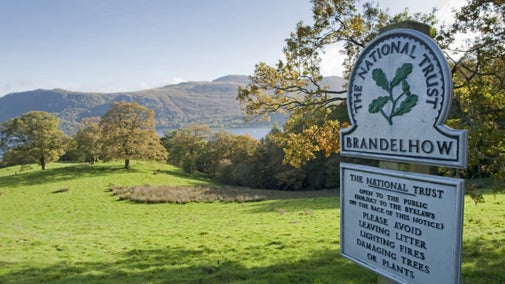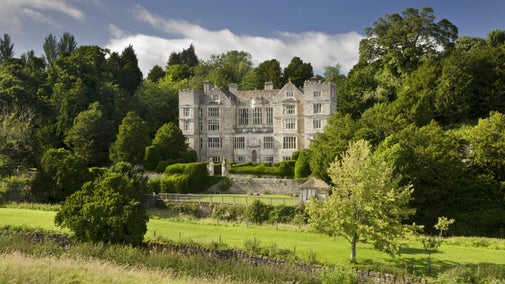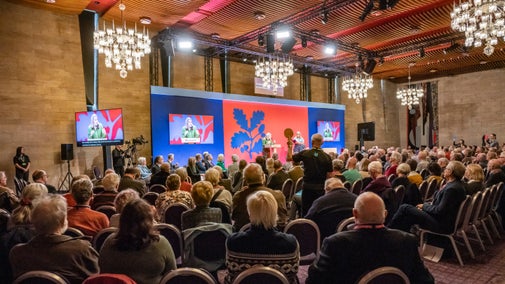
The Three Founders of the National Trust book
Find out more about Robert Hunter, Octavia Hill and Hardwicke Rawnsley in our book.

Solicitor Robert Hunter was one of three founders of the National Trust, whose contribution to its creation came through his legal expertise. Known as a humble man who did not seek the limelight, he ensured the idea of the Trust became a reality. Find out how his job led to its creation and why he believed in its work to help preserve places of historic interest and natural beauty.
Robert Hunter was born in Camberwell, London, on 27 October 1844, the first and only son of master mariner Robert Lachlan Hunter and his wife, Anne. His father retired from life at sea soon after his birth, but continued as part-owner of various ships allowing Robert to enjoy a comfortable, middle-class upbringing.
The family lived in different parts of the capital at a time when it was rapidly expanding, and Robert witnessed major development where roads and houses replaced green fields.
His daughter, Dorothy, said the ‘rapid transformations’ he saw of his early homes ‘may well have fostered and encouraged his desire to secure for the dwellers in the towns: gardens, parks or wide-open spaces, as some reminder of the beauties and amenities of the country’.
Quiet and studious by nature, Robert graduated from University College, London, and by 1865 started a career in law. The following year, while working for firm Eyre and Lawson, he was shortlisted in an essay competition where he wrote about commons preservation.
The piece was published despite him not winning, allowing Robert to persuade Philip Lawrence, solicitor to the Commons Preservation Society, to allow him to join his team as an articled clerk.
Robert took up a new role in 1867 to defend common land from enclosure and development. One of his early cases was the successful argument against Lord Spencer’s attempt to enclose Wimbledon Common.
National Trust co-founder Octavia Hill was a member of the Commons Preservation Society founded in 1865, which was one of the first environmental campaign groups in the country. After Philip sold his firm in 1868 to Robert and two senior partners, Tom Fawcett and Percy Horne, the new firm of Fawcett, Horne and Hunter continued to work for the society.
Robert’s high-profile cases included saving Epping Forest, Dartford Heath and Hampstead Heath from enclosure and development, and he made a name for himself as the country's leading expert on commons law. His biographer Ben Cowell said: ‘He was a modest man who didn’t seek the limelight, but he felt very passionately about heritage and open spaces.’

In 1869 Robert married Emily Browning, whom he had known since childhood, who tragically died in childbirth just three years later. He married again in 1877, to Ellen ‘Nellie’ Cann, and they had three daughters. They moved to a substantial property in Haslemere, Surrey, in 1882 where Robert would live for the rest of his life.
Robert was appointed to an important role as solicitor to the General Post Office in 1882, a job he would continue until retirement. Although no longer the solicitor for the Commons Preservation Society, he continued to be an active member of its campaigns.
Robert became honorary legal adviser and chairman to the Open Spaces sub-committee of Octavia’s Kyrle Society, which provided access to art, music, books, and open spaces to the working-class poor.
She introduced him to a key leader of the Lake District Defence Society, Canon Hardwicke Rawnsley, that campaigned against industrial development in the Lakes. Being a keen fell walker himself, Robert fought against the closure of footpaths in Keswick.
He also took an interest in the Society for the Protection of Ancient Buildings, founded in 1882 by artist William Morris, and that year worked to pass the Ancient Monuments Protection Act.
Together with Hardwicke and Octavia, Robert began to discuss forming an organisation that could own land on behalf of the nation, saving it from the risk of development and ensuring public access. It was Robert who first suggested the name the National Trust.
In 1895 the National Trust for Places of Historic Interest or Natural Beauty was formed, so green spaces could ‘be kept for the enjoyment, refreshment, and rest of those who have no country house’.

Robert navigated the legal minefield to allow the Trust’s formation, and as its first Chair introduced its unique breadth in caring for a wide variety of buildings and landscapes. He described the National Trust as being ‘the friend alike of historian, painter and poet’.
He pushed for an Act of Parliament, passed in 1907, enshrining in law for ever the Trust’s right and legal obligation to hold property 'inalienably' on behalf of the nation.
Biographer Ben Cowell said: ‘Where his co-founders provided much of the fire and passion that drove the movement in its earliest years, lawyer and solicitor Robert turned that energy into legal reality.’
Robert's work led to his knighthood in 1894, ‘for services to the conservation of open spaces’. He was elevated to Commander in 1909 and Knight Commander of the Order of the Bath in 1911.
In 1913, just months after his retirement, he died and was buried at St Bartholomew’s Church, Haslemere. Although his grave is unmarked, the monument to his achievements can still be seen today in the land and buildings he helped save.
Robert was personally involved in acquiring some of the Trust’s first lands, including the 750 acres of Hindhead Commons. After his death a public subscription in his memory raised enough money to buy 14 acres at Waggoner's Wells, near Haslemere, which were also donated to the Trust.
It was Robert's vision and legal shrewdness that had the greatest impact. Biographer Ben Cowell adds: ‘He ensured that the Trust’s purpose was written very broadly, to give it the powers to own whatever sort of places its trustees felt were of “Historic Interest or Natural Beauty”.’
Thanks to his foresight, the National Trust cares for everything from prehistoric monuments and stately homes to pubs and radar stations, and protects diverse habitats including coastlines, bogs, waterfalls, and moorland. Due to the obligations Robert wrote down in the Trust's purposes, and thanks to the generous donations of supporters, we look after them for everyone, for ever.

Find out more about Robert Hunter, Octavia Hill and Hardwicke Rawnsley in our book.
One of three founders of the National Trust, Octavia Hill is among the greatest social entrepreneurs in British history and the impact of her life and work is still felt today.

As well as a founder of the National Trust, Hardwicke Rawnsley was a religious man, writer, social reformer and active campaigner for the protection of the Lake District.

Discover the history of the National Trust, from its foundation in the 19th century, through key projects, wartime and epidemics, to the modern day.

Discover more about our legacy, people and values as a conservation charity. We protect historic places and green spaces while opening them up for everyone, for ever.

Discover how the National Trust is run, how our governance arrangements are underpinned by Acts of Parliament and how they are designed to support and challenge our staff.

We're committed to meeting the needs and expectations of a diverse society. Find out what we're doing to create an inclusive, accessible and welcoming environment for our supporters, staff and volunteers.

The first National Trust Act passed in 1907. Successive Acts have since been introduced to ensure the National Trust continues to be well governed and remains true to its cause.
